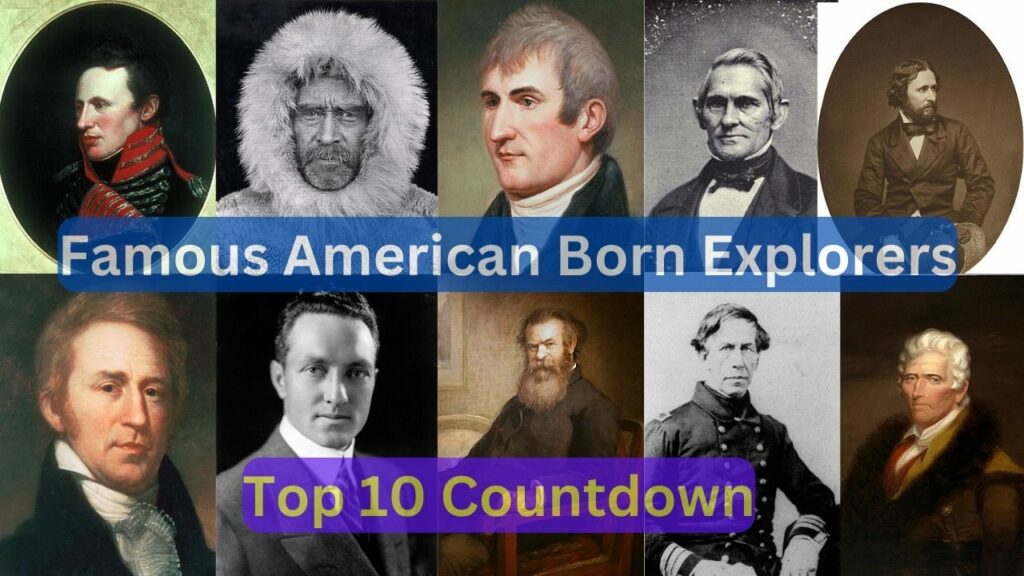
Here is the USA, we have our share of American born explorers. This top 10 list details some of their exploits. Here is a quick over view of who is on the list:
Quick Introduction to the American born explorers:
- John Wesley Powell: A trailblazing American geologist, explorer, and military officer, Powell is celebrated for leading the first successful expedition through the formidable Grand Canyon, a journey that tested the limits of human endurance and reshaped our understanding of the American West. Powell’s adventurous spirit and commitment to scientific inquiry continue to inspire explorers and conservationists to this day.
- Zebulon Pike: Embark on a thrilling adventure with Zebulon Pike as he ventures into the untamed frontiers of the early 19th century, discovering towering peaks and sparking international intrigue, all while seeking the source of the Arkansas River.
- Meriwether Lewis: Dive into the incredible life of Meriwether Lewis, the charismatic leader of the Lewis and Clark Expedition, whose brilliant leadership and scientific discoveries reshaped our understanding of the vast, mysterious wilderness of North America.
- William Clark: Experience the rugged resilience of William Clark as he co-captains the legendary Lewis and Clark Expedition, navigating treacherous terrain and forging unbreakable bonds with Native American allies during their historic journey.
- John Charles Frémont: Follow the fearless pathfinder, John Charles Frémont, as he charts the uncharted American West, igniting the spirit of Manifest Destiny and capturing the imaginations of countless pioneers with his daring exploration.
- Daniel Boone: Step back in time with the legendary frontiersman, Daniel Boone, as he blazes trails through the Appalachian wilderness, survives intense encounters with Native American tribes, and helps pave the way for westward expansion in America.
- Robert E. Peary: Embark on an epic Arctic adventure with Robert E. Peary, the relentless explorer who staked his life on a quest to reach the North Pole, pushing the limits of human endurance in the harshest, most forbidding environment on Earth.
- Hiram Bingham: Uncover the mysteries of Machu Picchu alongside Hiram Bingham, the American explorer who brought the lost city of the Incas to the world’s attention, unraveling an ancient civilization’s secrets hidden in the Peruvian Andes.
- Charles Wilkes: Join Charles Wilkes on a daring voyage of discovery, as he commands the United States Exploring Expedition to chart the uncharted waters of the Pacific, mapping new lands, and collecting groundbreaking scientific data.
- Richard Byrd: Soar into the skies with the intrepid aviator, Richard Byrd, as he takes you on record-setting flights over the world’s most extreme landscapes, from the icy expanses of Antarctica to the vast, unexplored frontiers of the Earth’s polar regions.
Top 10 Countdown:
#10 – Richard Byrd
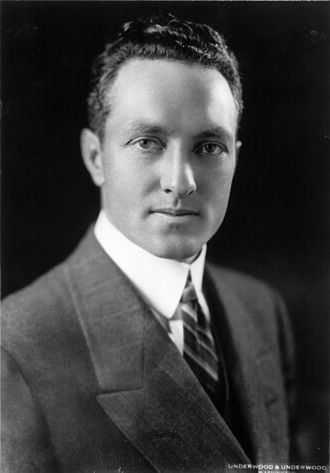
Born on October 25, 1888, in Winchester, Virginia, Richard Byrd was a renowned American aviator and polar explorer. He left an indelible mark on the world with his daring expeditions and pioneering flights into the world’s most extreme environments.
10 Interesting Facts about Richard Byrd:
- Byrd was the first person to fly over both the North and South Poles, a feat that earned him international acclaim.
- He made his historic flight over the North Pole in 1926, despite facing harsh weather conditions and limited visibility.
- Byrd led multiple Antarctic expeditions, conducting crucial scientific research and discovering new territory on the icy continent.
- During his 1929 Antarctic expedition, Byrd became the first person to fly over the South Pole, further solidifying his status as an aviation hero.
- He pioneered the use of aircraft in polar exploration, transforming the way we access and study the world’s harshest regions.
- Byrd’s expeditions led to invaluable discoveries about the Earth’s polar environments, contributing to our understanding of climate and geology.
- He was awarded numerous medals and honors for his contributions to science and exploration.
- Byrd’s work in Antarctica inspired future generations of polar explorers and researchers.
- He authored several books, sharing his experiences and knowledge with the world.
- Richard Byrd’s legacy continues to influence aviation, exploration, and climate science to this day.
Conclusion:
Richard Byrd’s groundbreaking expeditions and fearless flights have solidified his place in history as a legendary explorer and aviator. His contributions to our understanding of the polar regions and his pioneering spirit continue to inspire adventurers and scientists around the globe.
#9 – Charles Wilkes
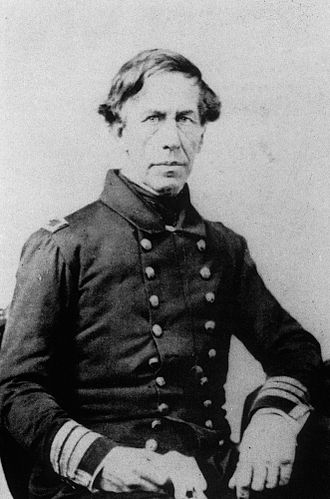
Charles Wilkes, born on April 3, 1798, in New York City, was a prominent American naval officer and explorer. He is best known for leading the United States Exploring Expedition, one of the most extensive and ambitious exploratory ventures of the 19th century.
10 Interesting Facts about Charles:
- Wilkes’ United States Exploring Expedition, from 1838 to 1842, covered vast uncharted territories, making significant contributions to geography, natural sciences, and ethnography.
- During the expedition, Wilkes surveyed over 280 islands and charted approximately 800 miles of the Antarctic coastline.
- He coined the term “Antarctica” and confirmed its existence as a continent.
- Wilkes collected thousands of specimens of plants, animals, and ethnographic artifacts, significantly expanding knowledge of the Pacific and its inhabitants.
- His expedition included the discovery of numerous new species, like the giant clam Tridacna gigas.
- Controversy and disagreements with foreign powers during the expedition strained diplomatic relations but also highlighted the scientific importance of the voyages.
- Wilkes authored the massive 19-volume “Narrative of the United States Exploring Expedition,” detailing their findings and experiences.
- He later served as a senior naval officer during the American Civil War.
- Wilkes’s impact on American science and exploration is still recognized today through place names and the Wilkes Land region in Antarctica.
- His dedication to mapping and understanding uncharted regions laid the groundwork for future explorers and scientists.
Conclusion:
Charles Wilkes’s leadership of the United States Exploring Expedition showcased the power of scientific exploration and its lasting impact on our understanding of the world. His legacy endures through the knowledge he brought to light and the inspiration he provided for generations of adventurers.
#8 – Hiram Bingham
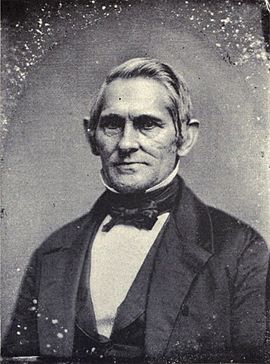
Hiram Bingham III, born on November 19, 1875, in Honolulu, Hawaii, was an American academic, explorer, treasure hunter, and politician. He is most renowned for his rediscovery of the ancient Incan city of Machu Picchu in 1911.
10 Interesting Facts about Hiram Bingham:
- Bingham’s rediscovery of Machu Picchu brought global attention to the ancient site, revealing a stunning archaeological treasure.
- He led several expeditions to explore and document the ruins in Peru, significantly advancing the study of Inca civilization.
- Bingham played a key role in transporting valuable artifacts and historical records from Machu Picchu to Yale University.
- His expeditions and publications drew both admiration and criticism, as some questioned the ethics of removing artifacts from their original location.
- Bingham’s discoveries opened doors for further research and archaeological exploration of the Andean region.
- Beyond his explorations, he served as a professor and later as a U.S. Senator.
- Bingham’s influence extended to his contributions in the fields of South American studies and history.
- He was involved in international politics, serving as a delegate to the League of Nations.
- Bingham’s expeditions in Peru remain a subject of debate in contemporary discussions of cultural heritage and archaeological ethics.
- His work helped shape the field of archaeology in South America and has inspired countless researchers to explore the region’s past.
Conclusion:
Hiram Bingham’s rediscovery of Machu Picchu has left an enduring mark on the world of archaeology, and his legacy continues to influence debates about cultural heritage preservation and exploration ethics. His adventurous spirit and contributions to our understanding of Inca civilization remain a subject of fascination and study.
#7 – Robert E. Peary
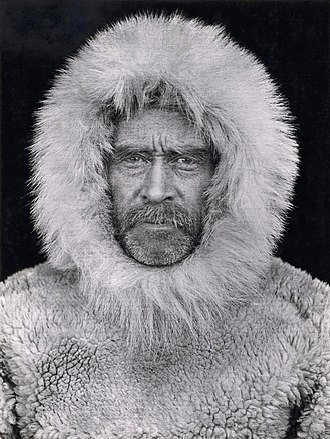
Robert Edwin Peary was born on May 6, 1856, in Cresson, Pennsylvania. He was a prominent American explorer and naval officer, best known for his pioneering efforts to reach the North Pole.
10 Interesting Facts about Robert E. Peary :
- Peary led several expeditions to the Arctic, including the North Greenland Expedition of 1891-1892, which marked his initial foray into polar exploration.
- He is celebrated for being the first person to reach the North Pole, achieved on April 6, 1909, during his final expedition.
- The controversy surrounding Peary’s claim to the North Pole arises from conflicting accounts and disputes with fellow explorer Frederick Cook.
- His expeditions were characterized by extreme cold, harsh conditions, and enduring grueling challenges.
- Peary’s leadership in the field of polar exploration made him a hero in the eyes of the American public.
- He was renowned for his meticulous planning and determination, which were essential for success in the Arctic.
- Despite the achievement, Peary’s expedition struggled with severe frostbite and near-starvation during the return journey.
- His Arctic explorations led to significant geographical discoveries and scientific observations.
- Peary received numerous awards and honors, including the Hubbard Medal from the National Geographic Society.
- His expeditions continue to be studied for their contributions to our understanding of the Arctic, its geography, and its unique ecosystems.
Conclusion:
Robert E. Peary’s triumph in reaching the North Pole stands as one of the most iconic achievements in the history of polar exploration. His remarkable dedication and accomplishments in the Arctic continue to inspire adventurers and researchers seeking to unravel the mysteries of the frozen north.
#6 – Daniel Boone
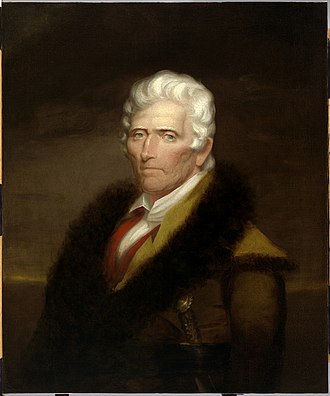
Born on November 2, 1734, in Berks County, Pennsylvania, Daniel Boone became an American folk hero, frontiersman, and explorer, renowned for his adventures in the American wilderness.
10 Interesting Facts about Daniel Boone:
- Boone’s pioneering spirit led him to blaze the Wilderness Road through the Appalachian Mountains into Kentucky in 1775, opening up new lands for settlement.
- He played a crucial role in the westward expansion of the United States, helping to establish Kentucky as a state.
- Boone was captured by Native Americans during the early days of Kentucky settlement but eventually escaped.
- He is often portrayed as a rugged and independent frontiersman, helping shape the enduring image of the American pioneer.
- Boone’s experiences with Native American tribes gave him valuable insights into their cultures and survival techniques.
- He led numerous hunting and trapping expeditions, providing essential resources for settlers and pioneers.
- Boone’s life and adventures became the subject of numerous books, folk tales, and even a television series.
- His adventurous spirit and willingness to explore the untamed wilderness set the stage for future pioneers and settlers.
- Boone continued his exploration into Missouri and other western territories.
- His legacy as a legendary frontiersman and explorer has left an indelible mark on American history and the spirit of the Wild West.
Conclusion:
Daniel Boone’s pioneering spirit and daring journeys into uncharted territory embody the American frontier spirit. His legacy as a symbol of the American West and the early days of exploration and settlement continues to captivate the imaginations of people around the world.
#5 – John Charles Frémont
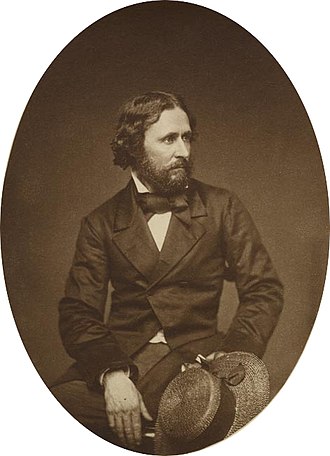
John Charles Frémont, born on January 21, 1813, in Savannah, Georgia, was an American explorer, military officer, and politician. He is celebrated for his role in exploring the American West during the 19th century.
10 Interesting Facts about Fremont:
- Frémont’s expeditions and surveys of the western United States earned him the nickname “The Pathfinder.”
- He played a vital role in the expansion of the American frontier, leading multiple exploratory missions.
- Frémont’s detailed maps and reports of the Oregon Trail and the California Trail became essential resources for pioneers.
- He was the first American to officially report the existence of Lake Tahoe.
- Frémont’s explorations were instrumental in shaping the nation’s understanding of the West and its potential for settlement.
- During his 1843-1844 expedition, he and his team experienced treacherous conditions and near-starvation in the Sierra Nevada mountains.
- He married Jessie Benton, the daughter of Senator Thomas Hart Benton, who played a significant role in promoting his career.
- Frémont was a controversial figure in politics, running as the first Republican presidential candidate in 1856.
- His legacy is also marked by disputes with Mexican authorities, as his activities in California contributed to the tension leading up to the Mexican-American War.
- John Charles Frémont’s exploration of the American West left an enduring legacy, contributing to the idea of Manifest Destiny and inspiring countless pioneers to head west.
Conclusion:
John Charles Frémont’s explorations of the American West played a pivotal role in shaping the nation’s expansion and the spirit of westward exploration. His efforts in mapping and describing the western territories were crucial in guiding early pioneers, settlers, and the growth of the United States.
#4 – William Clark
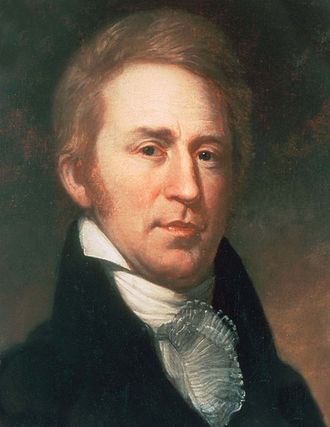
William Clark, born on August 1, 1770, in Caroline County, Virginia, is renowned as one of the leaders of the famous Lewis and Clark Expedition, which explored the newly acquired Louisiana Territory and the Pacific Northwest.
10 Interesting Facts about William Clark:
- Clark was a skilled frontiersman and served in the United States Army before teaming up with Meriwether Lewis for the historic expedition.
- The Lewis and Clark Expedition, from 1804 to 1806, aimed to explore and map the western territories acquired through the Louisiana Purchase.
- Clark’s detailed maps and journals helped to document the geography, flora, and fauna of the American West.
- He forged essential diplomatic relationships with Native American tribes, securing their cooperation and support during the expedition.
- Clark’s slave, York, played a significant role in the journey, and his interactions with Native American tribes challenged preconceived notions of race.
- After the expedition, Clark served as Superintendent of Indian Affairs, overseeing relations with numerous Native American tribes in the Western United States.
- He played a critical role in negotiating and drafting treaties with Native American nations.
- Clark’s leadership and contributions to American exploration earned him the rank of brigadier general in the Missouri Territory militia.
- He established Fort Osage and Fort Atkinson, contributing to the westward expansion of the United States.
- William Clark’s exploration and diplomatic skills continue to be celebrated for their role in shaping the nation and advancing the understanding of the American West.
Conclusion:
William Clark’s partnership with Meriwether Lewis in the Lewis and Clark Expedition left an indelible mark on American history, transforming the nation’s understanding of the vast western territories. His contributions as an explorer, mapmaker, and diplomat have become an integral part of the story of America’s westward expansion.
#3 – Meriwether Lewis
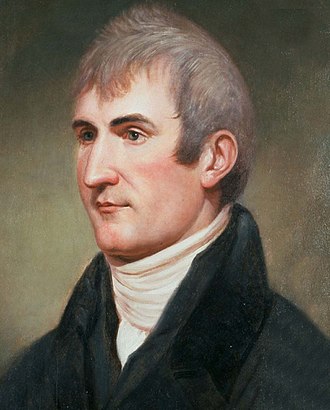
Meriwether Lewis, born on August 18, 1774, in Ivy, Virginia, is celebrated for his leadership of the Lewis and Clark Expedition, one of the most iconic exploratory ventures in American history.
10 Interesting Facts about Meriwether:
- Lewis was President Thomas Jefferson’s personal secretary and was handpicked by Jefferson to lead the expedition into the newly acquired Louisiana Territory.
- The Lewis and Clark Expedition, from 1804 to 1806, aimed to explore and map the western territories, find a route to the Pacific, and establish American sovereignty.
- Lewis’s training in the natural sciences made him a valuable asset in documenting the flora and fauna of the American West.
- He encountered a near-fatal injury from a gunshot wound during the expedition, which had long-term effects on his health.
- Lewis’s journals provided valuable insights into Native American cultures and tribal languages.
- The expedition made significant contributions to geographical knowledge and inspired future westward expansion.
- After the expedition, Lewis served as the Governor of the Louisiana Territory.
- Lewis’s life was marked by struggles, including challenges with alcohol and debt.
- His death, shrouded in mystery, occurred in 1809 when he was just 35 years old.
- Meriwether Lewis’s legacy as a pioneering explorer and naturalist remains an integral part of American history, and his contributions to science and geography continue to be celebrated.
Conclusion:
Meriwether Lewis’s leadership of the Lewis and Clark Expedition stands as a symbol of American exploration and discovery. His courage, scientific acumen, and contributions to our understanding of the American West have solidified his place in history as one of the nation’s greatest explorers.
#2 – Zebulon Pike
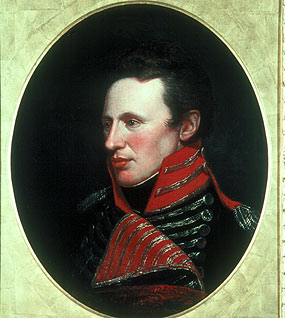
Zebulon Pike, born on January 5, 1779, in Lamberton, New Jersey, was an intrepid American explorer who ventured into the uncharted frontiers of the early 19th century, leaving a lasting legacy in the annals of American exploration.
10 Interesting Facts about Zebulon Pike:
- Pike’s most famous expedition, the Pike Expedition, was authorized by the United States government to explore the southwestern portion of the Louisiana Purchase and find the headwaters of the Red River.
- During his exploration, Pike and his party were captured by Spanish forces and taken to Chihuahua, Mexico, where they were detained and questioned for several months.
- Pike’s detailed reports and maps from his expeditions contributed significantly to the geographical knowledge of the American West, including the discovery of the towering Pikes Peak in Colorado.
- He later published a book titled “An Account of Expeditions to the Sources of the Mississippi and through the Western Parts of Louisiana” detailing his adventures.
- Pike’s name is also associated with Pike’s Stockade, a fur trading post he established in Colorado in 1807.
- He was promoted to the rank of brigadier general during the War of 1812 and died in the Battle of York (modern-day Toronto, Canada) in 1813.
- Pike’s explorations laid the groundwork for future American expansion westward and sparked interest in the vast, uncharted territories of the West.
- He is known for his commitment to scientific inquiry and mapmaking, which greatly enhanced knowledge of the American frontier.
- Zebulon Pike’s expeditions were undertaken under challenging conditions, facing harsh weather, rugged terrain, and encounters with Native American tribes.
- Pike’s explorations left an indelible mark on the history of American westward expansion, making him a prominent figure in the lore of American exploration.
Conclusion:
Zebulon Pike’s daring explorations and contributions to the understanding of the American West continue to captivate our imagination and serve as a testament to the adventurous spirit that drove early American pioneers to explore the unknown.
#1 – John Wesley Powell
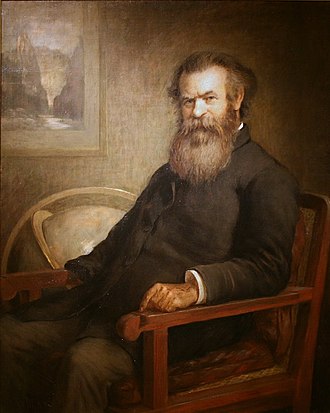
John Wesley Powell, born on March 24, 1834, in Mount Morris, New York, was a fearless American geologist, explorer, and military officer renowned for his pioneering journeys through the uncharted territories of the American West. He is best known for leading the first successful expedition through the Grand Canyon and advocating for thoughtful water resource management, leaving an enduring legacy in the field of American exploration and conservation.
10 Interesting Facts: about John Wesley Powell
- Powell’s most famous expedition, the Powell Geographic Expedition of 1869, explored the Colorado River and the Grand Canyon, becoming the first recorded passage through the entire canyon.
- He lost his right arm in the Civil War and later became known as the “one-armed explorer.”
- Powell’s advocacy for sustainable water resource management and conservation led to the establishment of the U.S. Geological Survey and the development of the first comprehensive classification of American arid lands.
- His seminal work, “Report on the Lands of the Arid Region of the United States,” laid the foundation for modern land and water management in the American West.
- Powell’s passion for science and exploration inspired numerous scientific discoveries in geology, anthropology, and ecology.
- He was a staunch supporter of Native American rights and worked to preserve their cultures and traditional lands.
- Powell’s leadership and innovative thinking during his expeditions helped prevent catastrophic losses and paved the way for future explorations.
- He served as the second director of the U.S. Geological Survey, playing a pivotal role in shaping the understanding of America’s natural resources.
- Powell’s legacy as an explorer, scientist, and conservationist remains a cornerstone of American environmental stewardship.
- His fearless spirit, determination, and scientific rigor continue to inspire those who seek to understand and protect the American wilderness.
Conclusion:
John Wesley Powell’s remarkable life and contributions to exploration, science, and conservation have left an indelible mark on the history of the American West, making him a revered figure in the pantheon of American explorers and environmental champions.
You can read more Top 10 Countdown lists here.
